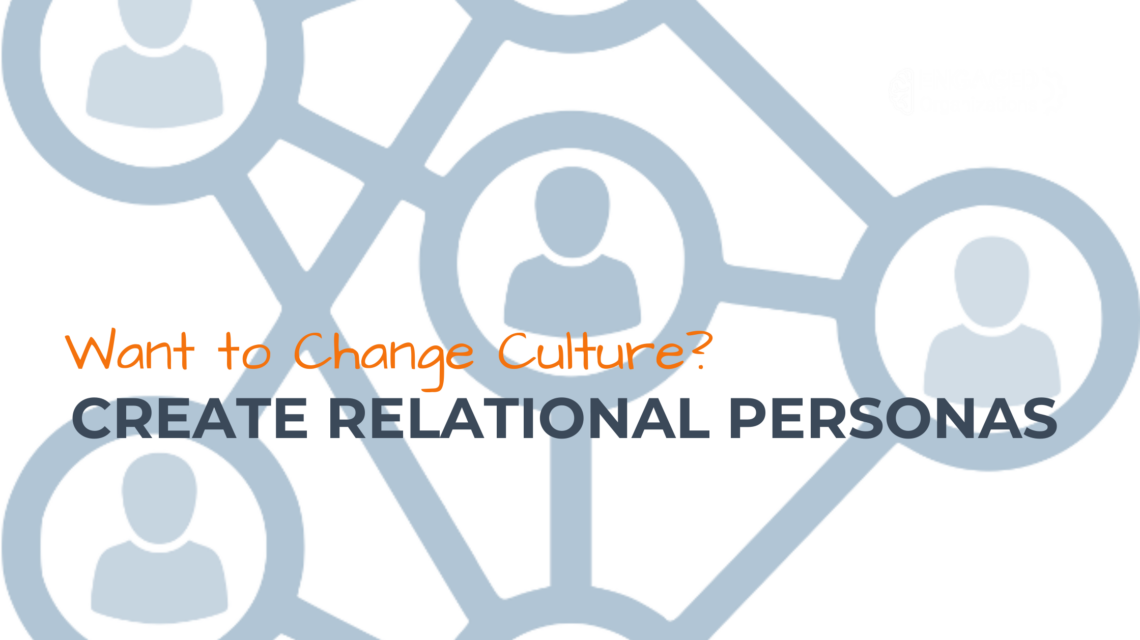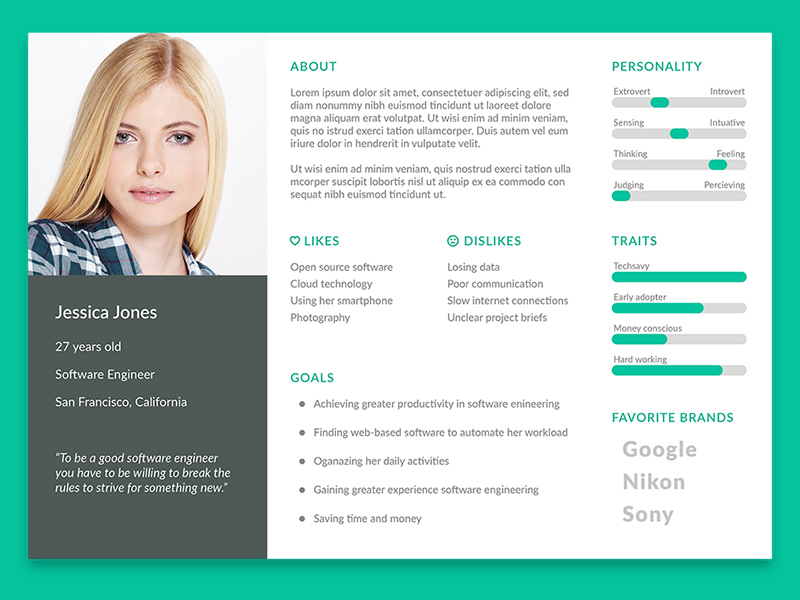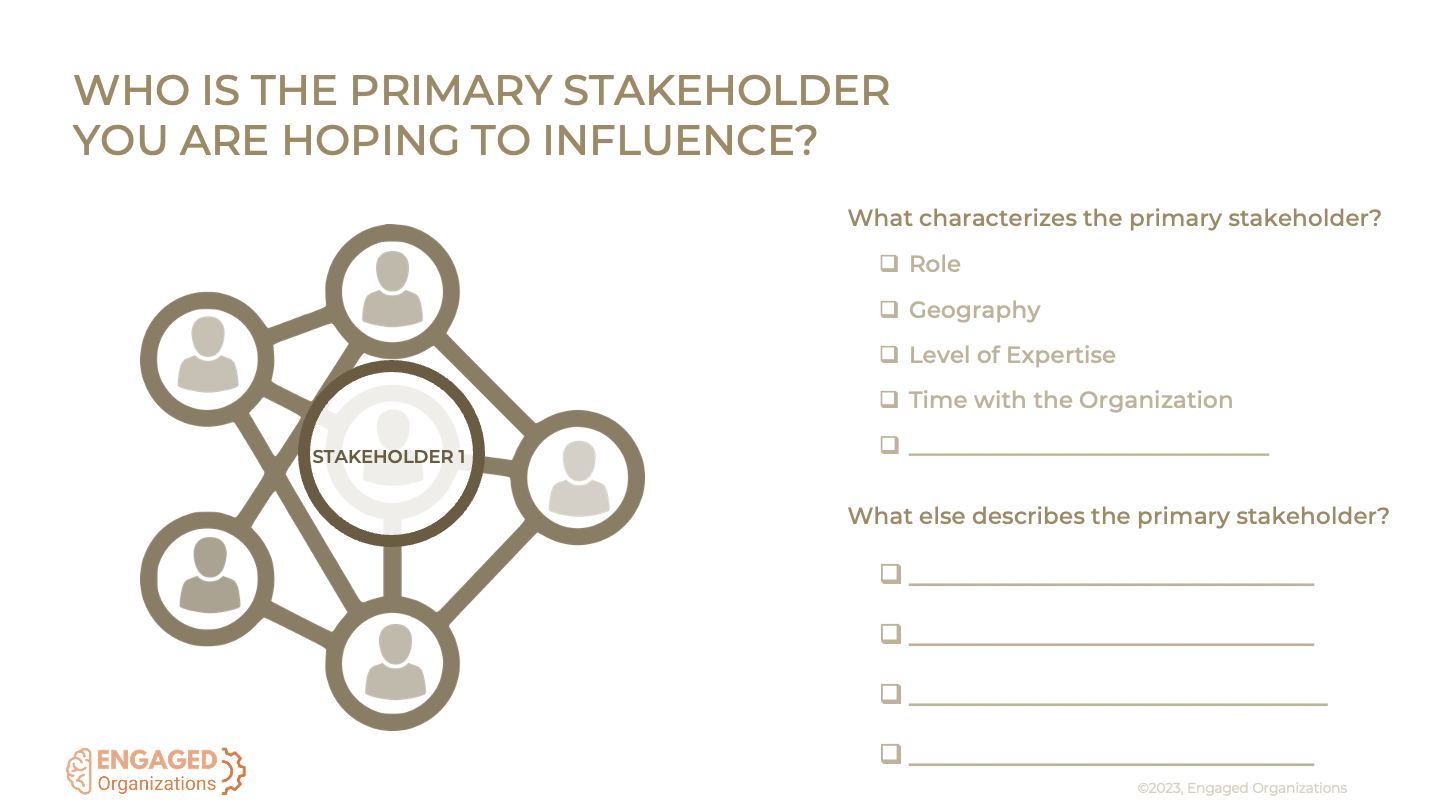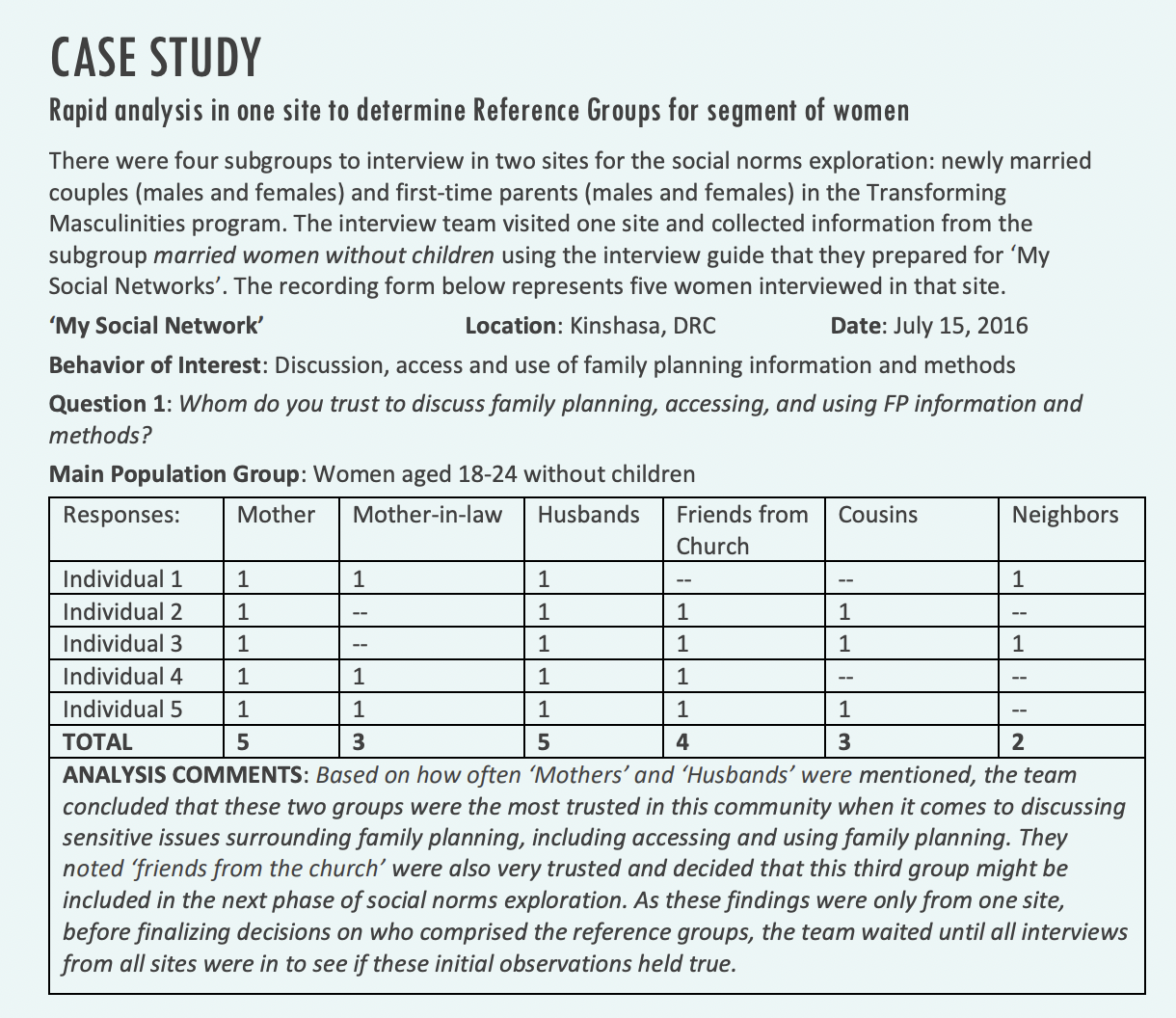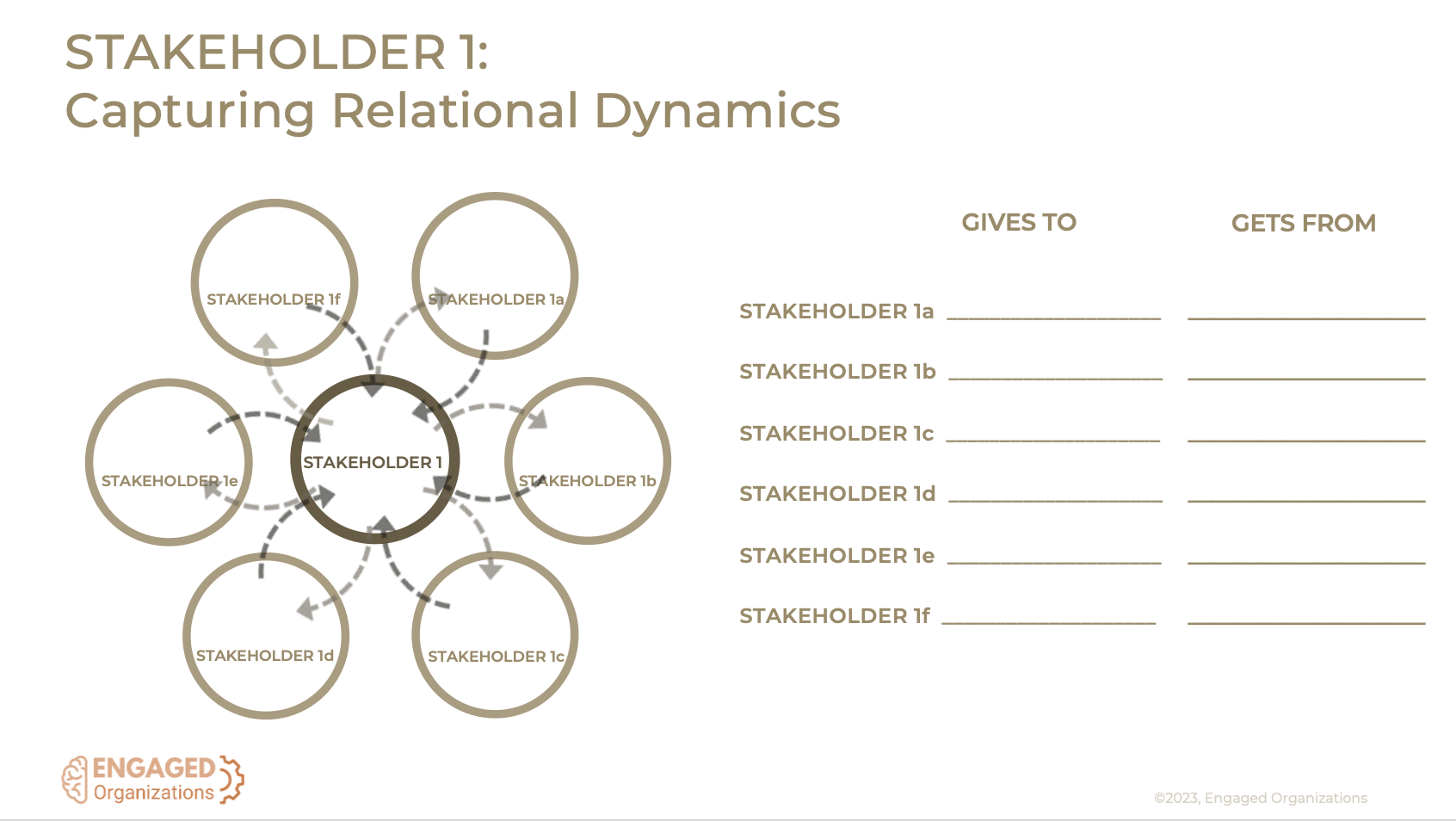Fostering culture change relies on understanding the individuals you hope to change and personas are a valuable starting point. Personas are an important tool used by strategists and product designers and are critical to understanding the people we are trying to engage. However, how these profiles are framed has a significant impact on the success of these efforts.
The most common types of personas focus on easy-to-see and explicit characteristics – this example includes age, location, traits, goals, and favorite brands. Another common approach to personas is a journey map that includes the path an individual follows in relation to a product or experience (an example).
Both of these approaches have a similar foundational flaw; neither approach includes social context. Social context is fundamental to human opinions, decisions, and behavior. Study after study shows that people will do either horrible or amazing things if it is normalized by their peer group. The experience of those around us shape what we believe is possible and acceptable. Because the most common types of personas ignore the influence of social context, they are limited and miss one of the biggest avenues to shape a person’s experience. Using these common persona models makes it too easy to fail in engaging and motivating people.
What People Do - and What They Say They Do
The second risk with the most common personas is the use of self-reported information in the form of surveys and interviews. Between confirmation biases, perceived ‘correct’ answers, and an authentic desire to do better, people are quite poor at reporting their actual behavior.
This 2020 research report published by the NIH looked at the correlation between self-reported vs. observed behavior and found, “Across a series of domains, recent meta-analyses, and large-scale investigations have consistently found that self-report and behavioral measures of the same construct were weakly correlated.”
TLDR: What people say they do and what they do are not the same.
There are methods to improve self-reporting in the way questions are asked, but for those without a Ph.D. in psychology or extensive experience in doing research, analyzing self-reported information should take into account a large margin of error.
Social Context Frames What is Possible
Social norming is intensely powerful. Imagine starting a new job and seeing everyone eat lunch at their desk even though you are encouraged to go out. It’s unlikely you will do so regularly unless others do. We like to believe we have free will but read Connected, and you may reevaluate your life choices about relationships 😛.
A compelling and successful approach to creating personas requires social context, which is the persona’s system of influence and information. People are happy to CHANGE WITH others, but no one likes being FORCED TO change. Understanding individuals and their social context can easily be the difference between success and failure.
Defining personas can be done by skills, expertise, seniority, geography, or other meaningful differentiators. In an organizational context, the lens of roles is a straightforward way to orient personas because those in the same role tend to interact with a similar social network. For example, all nurses interact with peer nurses, patients, supervisors, doctors, hospital administrators, and patients’ families daily. When this network of interactions and influence is considered, it surfaces opportunities to create shared value – opportunities that will give individuals a meaningful reason to change while also generating value for the organization.
Creating this type of persona reveals:
- The secondary personas who are most influential to a primary persona.
- A persona’s highest volume and the most meaningful interactions.
- Opportunities for interactions to be eliminated, improved, or redirected.
How USAID Uses Relational Profiles to Increase Impact
This USAID Social Norms Exploration Tool is the first persona development, strategy, and planning methodology I know of with a relational frame. While it targets international development use cases, the approach works with any use case.
Creating Relational Personas
In my client work, personas development is similar but more agile because the population is typically already known. In most cases, clients can identify relational networks within their organization. The other difference is that instead of starting with a fixed idea of the desired change, I facilitated the exploration and prioritization of discovered opportunities with the highest potential for improvement and that will generate the most value for the organization.
It is essential to keep the process agile because behaviors are fluid – unlike systems or infrastructure – and are variable by day, situation, and individual. Attempting to be more precise creates an assumption that precision is possible. That assumption creates unrealistic expectations which can create friction or a perception of failure that is not realistic. A perfect understanding of influence over behavior does not exist. The goal is to impact the frequency of behaviors in a large population over time. On a daily basis, there will be significant variability.
Relational profiles must only be “good enough” to identify solid hypotheses. Real-world pilots and testing are the quickest and most effective way to discover what works. I use the elements of the Fogg Behavior Model – motivation, ease, and prompts – to help clients design workflow experiments. Running experiments pinpoints the amount and kinds of ease, prompts, and rewards that result in behavior shifts.
The Process of Developing Relational Personas
I use the following process to develop relational personas:
- Define the strategic proposition
- Identify primary personas whose behavior impacts objectives
- List the secondary personas who interact with the primary persona
- Identify specific interactions between the primary and secondary personas
- Prioritize secondary personas based on influence
- Refine interactions into specific workflows
- Diagram each workflow to determine prompts, ease, and rewards
- Determine the most common behaviors across workflows
- Select three key behaviors to address
Relational Personas Are the Foundation of Collaborative Strategy
Relational personas are a critical foundation upon which to build a collaborative strategy – one that generates shared value for all stakeholders.
Do you include relationships and interactions in your personas?
What insights or aha have you gotten from thinking about the social context and interactions of someone’s behavior?


